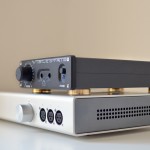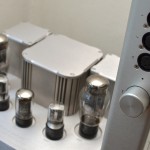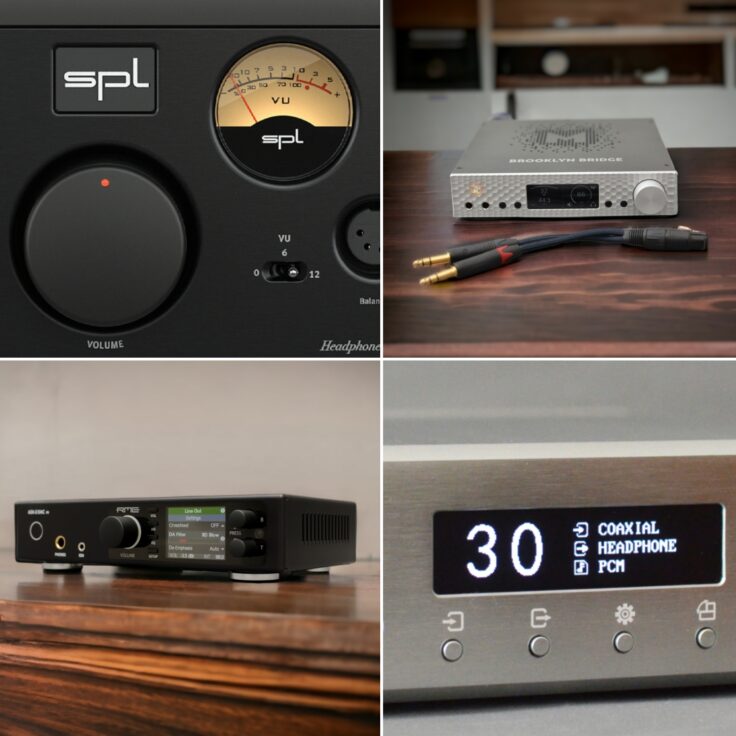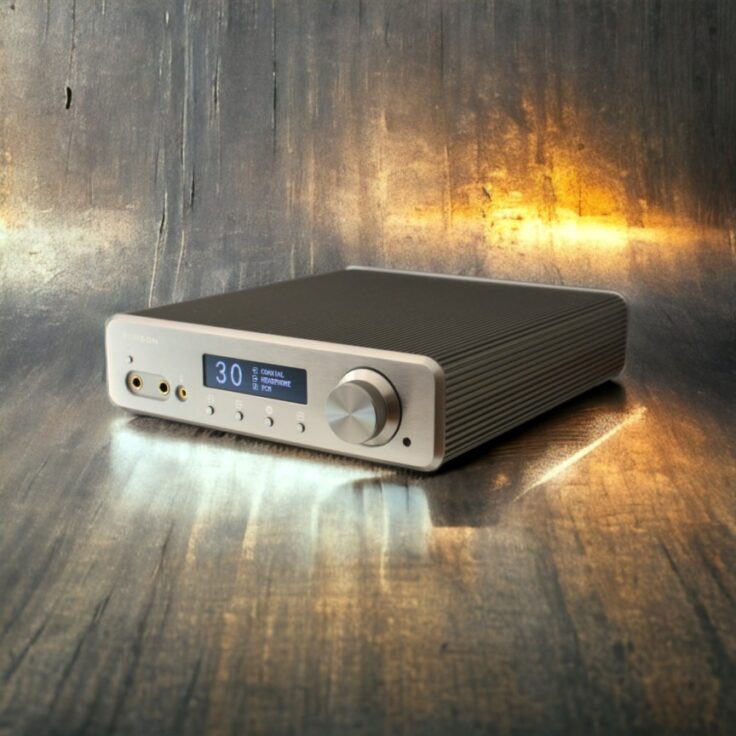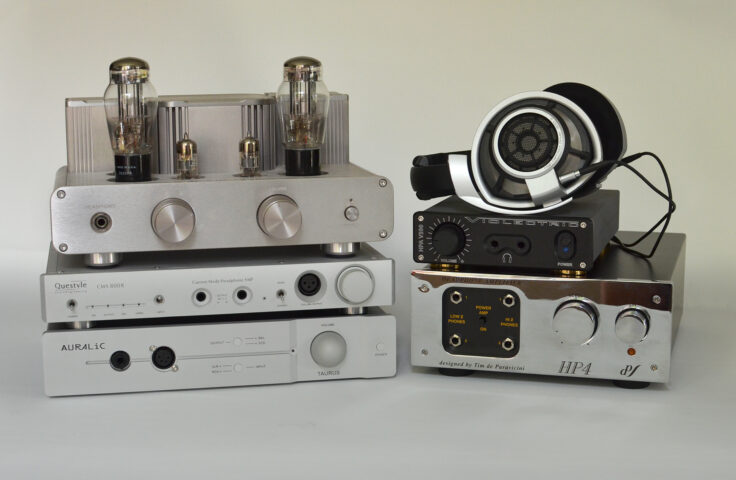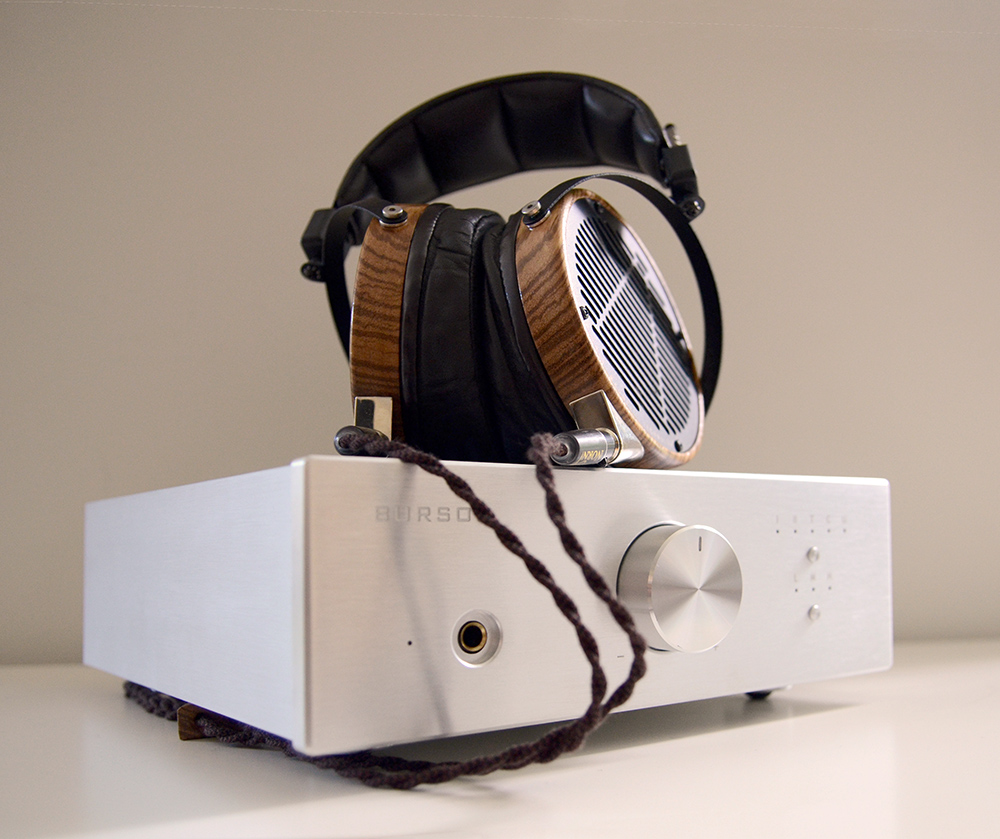
This is a review of the Burson Audio Conductor, a combined headphone amplifier and digitial to analog converter. But since the amplifier section of the Burson Conductor is identical to the Burson Audio Soloist, you can consider this a review of them both. Note: Since this review was written, Burson Audio launched the Burson Conductor Virtuoso. It houses the same amplifier section as the Conductor and the Soloist, but has a different volume control, featuring a remote.
The Burson Soloist sports a powerful headphone amplifier, evolved from its predecessor, the Burson HA160. It has three analog inputs, and a 1/4′ headphone ouput as well as a pre-amp output. Adding a multiple input digital-to-analog converter (DAC) to this, it makes the The Burson Conductor somewhat of a multitasking champion. First, it houses a headphone amplifier identical to the stand-alone Burson Soloist. Second, it has a great sounding DAC, with its own dedicated power supply (in order not to degrade the sound of the amplifier section). Third, it offers both fixed and pre-amp outputs. Thus, as opposed to many similar looking products, this is not a DAC with a secondary headphone amp, nor is it a headphone amplifier with an “add-on” DAC. This a serious head-amp and a great DAC, with full pre-amp functionality including multiple digital and analog inputs. Enclosed in a beautiful aluminum chassis the Burson Conductor can serve as the center for a great setup for both headphones and speakers.
Doing this review, I focused primarily on the on the Conductor’s headphone amplification capabilities. The Burson were compared track by track and headphone by headphone to some high quality headphone amps. It really did pretty well. And yes, I also checked out the DAC-section, which also did pretty well.
First impressions
My first impressions with the Conductor were quite good. Using the HD650, I found especially the soundstage impressive. The Shure SRH1840 felt good too, with a great soundstage and a detailed, yet easy flowing, natural sound. The Audeze LCD-2 rev.1 was very enjoyable with the Conductor, for the same reasons. With those headphones, it clearly bettered the Lake People G103P – my “value for money” reference,. Though having its own appeal, with a more meaty sound, the 103P felt a bit muted in comparison, especially in the upper registers.
However, introducing the 103P’s favorite headphone, the Hifiman HE-500, made things a bit different. The Conductor really didn’t drive them with the grunty authority of the little black box. The G103P offers good image depth, with more meat, and a deep, powerful sound. The Conductor is crisper and lighter sounding, more exciting in the top registries – but somewhat flatter sounding. During initial listening, I felt it sounded open and wide, but in a bit strange, somewhat hollow way. However, after giving the Conductor some more time with the HE500, I liked it more than I did at first. It plays the HE-500 different than my other amplifiers, but in the end I started to enjoy it, especially for classical music.
The Conductor felt more refined, but significantly less powerful than the 103P when driving HE500. This suspicion was strengthened when I introduced the ultimate power-test, the notoriously hard to drive Hifiman HE-6. The Conductor really struggled, way more than the 103P. But since the HE-6 is a special case I will not hold it against the Conductor.
Generally the Conductor comes out as quite a bit more refined than the 103P, and with the exception of the mentioned Hifimans, it has proper amounts of authority and grunt too. Thereby, it was declared fit to move on for some competition in its own price segments – and above.
Amplifier comparisons
The in-depth amplifier comparisons were done using the Violectric V800 as a DAC for both amps, bypassing the internal DAC of the Conductor. I wanted to see how the Conductor’s/Soloist’s amplifier-section worked, using a familiar and neutral DAC with balanced output for the balanced amps that would be in the competition. I checked out the DAC-section of the Conductor later, although in less detail.
Each listening session is coconcluded with a subjective preference indicator, making it easy to see which amplifier I preferred for each session:
“A = B” indicates no distinguishable differences
“A >< B” indicates equal preference, but not necessarily that A and B sounds the same
“A > B” indicates “A preferred to B”
“A >> B” indicates “A clearly preferred to B”
In the following pages I will compare the Conductor/Soloist to the Violectric V200, the Auralic Taurus, and the Leben CS300XS.
Continue reading on the next page (click below)……


